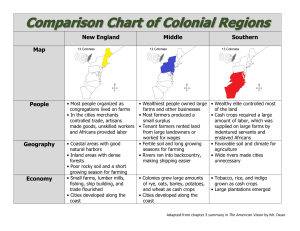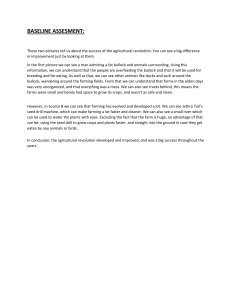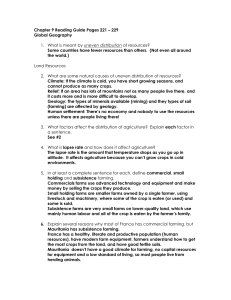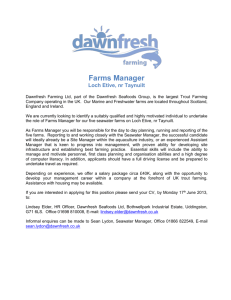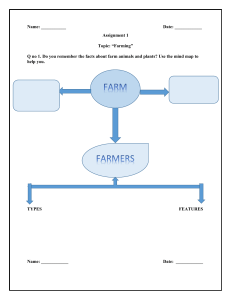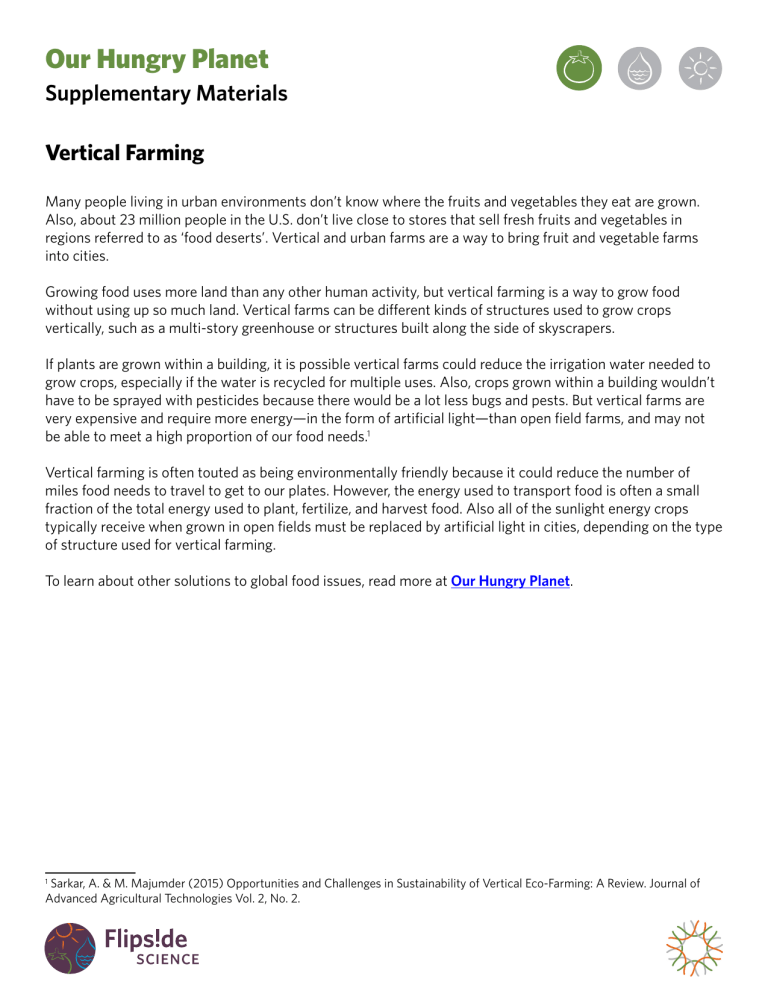
Our Hungry Planet Supplementary Materials Vertical Farming Many people living in urban environments don’t know where the fruits and vegetables they eat are grown. Also, about 23 million people in the U.S. don’t live close to stores that sell fresh fruits and vegetables in regions referred to as ‘food deserts’. Vertical and urban farms are a way to bring fruit and vegetable farms into cities. Growing food uses more land than any other human activity, but vertical farming is a way to grow food without using up so much land. Vertical farms can be different kinds of structures used to grow crops vertically, such as a multi-story greenhouse or structures built along the side of skyscrapers. If plants are grown within a building, it is possible vertical farms could reduce the irrigation water needed to grow crops, especially if the water is recycled for multiple uses. Also, crops grown within a building wouldn’t have to be sprayed with pesticides because there would be a lot less bugs and pests. But vertical farms are very expensive and require more energy—in the form of artificial light—than open field farms, and may not be able to meet a high proportion of our food needs.1 Vertical farming is often touted as being environmentally friendly because it could reduce the number of miles food needs to travel to get to our plates. However, the energy used to transport food is often a small fraction of the total energy used to plant, fertilize, and harvest food. Also all of the sunlight energy crops typically receive when grown in open fields must be replaced by artificial light in cities, depending on the type of structure used for vertical farming. To learn about other solutions to global food issues, read more at Our Hungry Planet. 1 Sarkar, A. & M. Majumder (2015) Opportunities and Challenges in Sustainability of Vertical Eco-Farming: A Review. Journal of Advanced Agricultural Technologies Vol. 2, No. 2. Weighing the Benefits and Drawbacks of Vertical Farming For a complex problem, we need to evaluate how a solution fares across multiple dimensions: Environmental Factors Social & Cultural Factors Economic Factors Benefits Drawbacks
